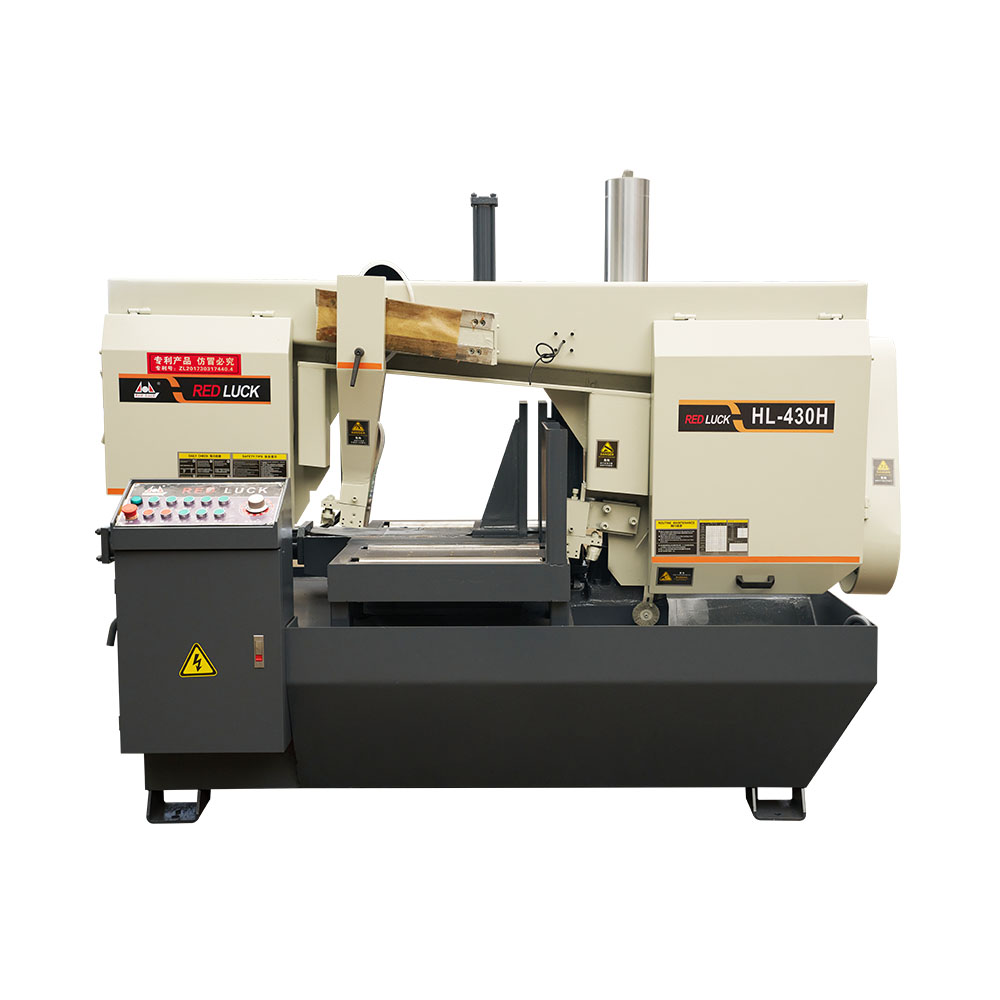Cutting With a Metal Cutting Band Saw
Working with a Metal Cutting Band Saw is one of effective ways to achieve clean, precise cuts across various metal materials. Whether you are using a vertical metal cutting band saw for intricate shapes or a horizontal metal cutting band saw for straight cuts on large stock, it's essential to follow the correct procedures for both safety and performance. This guide provides a practical walkthrough on how to cut metal effectively using a band saw.

Preparing for the Job
Before switching on your Metal Cutting Band Saw, preparation is key. Always wear appropriate safety gear. Safety glasses shield your eyes from metal fragments, while gloves improve grip and protect against sharp edges. If you're in a noisy environment or using a powerful horizontal metal cutting band saw, consider hearing protection as well.
Inspect your machine thoroughly. Whether it's a vertical metal cutting band saw in a workshop corner or a larger horizontal metal cutting band saw, ensure the blade is sharp, clean, and properly tensioned. Dull or loose blades can damage the machine and result in inaccurate cuts.
Selecting the Right Blade
Each Metal Cutting Band Saw can be fitted with blades designed for specific materials and thicknesses. A vertical metal cutting band saw might require a fine-tooth blade for detailed cuts on thin sheet metal, while a horizontal metal cutting band saw might benefit from a coarser tooth count for thick pipes or beams. Always select the correct blade to ensure smooth performance and extended blade life.
Securing and Aligning the Workpiece
Stability is essential. Position the metal securely on the worktable. Use clamps or a built-in vise, particularly on a horizontal metal cutting band saw, to prevent movement during operation. On a vertical metal cutting band saw, aligning the metal carefully is critical for detailed or curved cuts.
Adjust the upper and lower blade guides. On both vertical metal cutting band saw and horizontal metal cutting band saw models, the guides should be positioned close to the workpiece to maintain blade integrity and reduce vibration. Confirm that the guides are parallel to the blade and properly aligned with the cutting path.
Executing the Cut
Power up the Metal Cutting Band Saw and let the blade reach its full operational speed. Begin cutting by approaching the blade gently—on a horizontal metal cutting band saw, the blade moves downward into the workpiece, while on a vertical metal cutting band saw, the material is fed into a stationary blade.
Keep a consistent feed rate. Pushing too hard on the blade can cause damage or breakage, especially in heavy-duty operations involving a horizontal metal cutting band saw. Going too slowly, particularly with a vertical metal cutting band saw, may overheat the blade and distort your material.
Support the metal on both sides throughout the cut to prevent unwanted shifting or warping. If you're cutting long pieces on a horizontal metal cutting band saw, using a roller table or assistant can help maintain balance and accuracy.
Post-Cut Procedure
Once the cut is completed, allow the blade to stop completely before removing your workpiece. Never force a blade to stop manually. On larger models like the horizontal metal cutting band saw, letting the blade come to a full rest avoids unnecessary strain on the motor.
After cutting, inspect the result. If there are burrs or rough edges, smooth them with a file or deburring tool. This step is essential for safety and aesthetic finish, whether you used a vertical metal cutting band saw for detail work or a horizontal metal cutting band saw for structural cuts.
Lastly, clean your Metal Cutting Band Saw thoroughly. Brush away metal shavings, check the guides and blade for wear, and lubricate moving parts. Regular maintenance ensures both vertical metal cutting band saw and horizontal metal cutting band saw machines deliver consistent results and enjoy long service lives.
By applying these steps consistently, you can improve the efficiency, precision, and safety of your Metal Cutting Band Saw operations—regardless of whether you're cutting delicate components with a vertical metal cutting band saw or tackling heavy-duty beams with a horizontal metal cutting band saw.

 English
English 中文简体
中文简体 русский
русский

